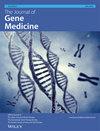Interleukin-17A educated hepatic stellate cells promote hepatocellular carcinoma occurrence through fibroblast activation protein expression
Abstract
Background
Liver cancer is typified by a complex inflammatory tumor microenvironment, where an array of cytokines and stromal cells orchestrate a milieu that significantly influences tumorigenesis. Interleukin-17A (IL-17A), a pivotal pro-inflammatory cytokine predominantly secreted by Th17 cells, is known to play a substantial role in the etiology and progression of liver cancer. However, the precise mechanism by which IL-17A engages with hepatic stellate cells (HSCs) to facilitate the development of hepatocellular carcinoma (HCC) remains to be fully elucidated. This investigation seeks to unravel the interplay between IL-17A and HSCs in the context of HCC.
Methods
An HCC model was established in male Sprague–Dawley rats using diethylnitrosamine to explore the roles of IL-17A and HSCs in HCC pathogenesis. In vivo overexpression of Il17a was achieved using adeno-associated virus. A suite of molecular techniques, including RT-qPCR, enzyme-linked immunosorbent assays, Western blotting, cell counting kit-8 assays and colony formation assays, was employed for in vitro analyses.
Results
The study findings indicate that IL-17A is a key mediator in HCC promotion, primarily through the activation of hepatic progenitor cells (HPCs). This pro-tumorigenic influence appears to be mediated by HSCs, rather than through a direct effect on HPCs. Notably, IL-17A-induced expression of fibroblast activation protein (FAP) in HSCs emerged as a critical factor in HCC progression. Silencing Fap in IL-17A-stimulated HSCs was observed to reverse the HCC-promoting effects of HSCs.
Conclusions
The collective evidence from this study implicates the IL-17A/FAP signaling axis within HSCs as a contributor to HCC development by enhancing HPC activation. These findings bolster the potential of IL-17A as a diagnostic and preventative target for HCC, offering new avenues for therapeutic intervention.

 求助内容:
求助内容: 应助结果提醒方式:
应助结果提醒方式:


